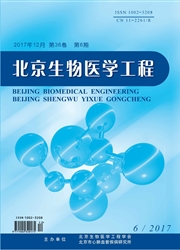

 中文摘要:
中文摘要:
目的 随着高通量测序技术的发展,产生了大量的微生物16S rRNA基因序列数据.对该数据进行精确的微生物操作分类单元(operational taxonomic unit,OTU)划分,有助于了解环境中微生物的种群组成及分布.方法 本文在真实数据集与模拟数据集上,对现有的7种流行OTU单元聚类算法进行了对比研究,并分析了这些算法的优缺点及使用范围.结果 序列长度、测序深度对聚类结果均有影响.结论 相同的序列相似性阈值下,不同的聚类算法聚类结果差异较大,其中CROP算法的鲁棒性和抗噪性较好.
 英文摘要:
英文摘要:
Objective Recent advance of high-throughput next-generation sequencing technology allows us to generate a great deal of 16 S rRNA sequences.We can explore the population composition and distribution of the environmental microbes by accurately clustering the 16 S rRNA sequences into operational taxonomic units (OTU).Methods In the present work,we conducted a comprehensive evaluation of seven existing methods for OTU inference based on both real and simulated data,and identified the advantages and limitation of these algorithms.Results We found the sequence length and sequencing depth affected the OTU results.Conclusions At the same sequence similarity threshold,the clustering results of these clustering algorithms are different and the CROP algorithm is robust and insensitive to noise.
 同期刊论文项目
同期刊论文项目
 同项目期刊论文
同项目期刊论文
 Supervised method for Periodontitis phenotypes prediction based on microbial composition using 16S r
Supervised method for Periodontitis phenotypes prediction based on microbial composition using 16S r Prioritization of candidate disease genes by enlarging the seed set and fusing information of the ne
Prioritization of candidate disease genes by enlarging the seed set and fusing information of the ne Prediction of Signal Peptide Cleavage Sites with SubsiteCoupled and Template Matching Fusion Algorit
Prediction of Signal Peptide Cleavage Sites with SubsiteCoupled and Template Matching Fusion Algorit MSLoc-DT: A new method for predicting the protein subcellular location of multispecies based on deci
MSLoc-DT: A new method for predicting the protein subcellular location of multispecies based on deci Mining Seasonal Marine Microbial Pattern with Greedy Heuristic Clustering and Symmetrical Nonnegativ
Mining Seasonal Marine Microbial Pattern with Greedy Heuristic Clustering and Symmetrical Nonnegativ A protocol for RNA methylation differential analysis with MeRIP-Seq data and exomePeak R/Bioconducto
A protocol for RNA methylation differential analysis with MeRIP-Seq data and exomePeak R/Bioconducto An ensemble method for reconstructing gene regulatorynetwork with jackknife resampling and arithmeti
An ensemble method for reconstructing gene regulatorynetwork with jackknife resampling and arithmeti Prediction of drug-target interaction by label propagation with mutual interaction informationderive
Prediction of drug-target interaction by label propagation with mutual interaction informationderive Prediction of signal peptide cleavage sites withsubsite-coupled and template matching fusion algorit
Prediction of signal peptide cleavage sites withsubsite-coupled and template matching fusion algorit Spatially Enhanced Differential RNA Methylation Analysis from Affinity-Based Sequencing Data with Hi
Spatially Enhanced Differential RNA Methylation Analysis from Affinity-Based Sequencing Data with Hi Decomposition of RNA methylome reveals co-methylation patterns induced by latent enzymatic regulator
Decomposition of RNA methylome reveals co-methylation patterns induced by latent enzymatic regulator lncRNA-MFDL: Identification of human long non-coding RNAs by fusing multiple features and using deep
lncRNA-MFDL: Identification of human long non-coding RNAs by fusing multiple features and using deep Using Chou’s pseudo amino acid composition to predict protein quaternary structure: a sequence-segme
Using Chou’s pseudo amino acid composition to predict protein quaternary structure: a sequence-segme Using pseudo amino acid composition to predict protein subcellular location: approached with amino a
Using pseudo amino acid composition to predict protein subcellular location: approached with amino a Prediction of protein protein-interaction types using the decision templates based on multiple class
Prediction of protein protein-interaction types using the decision templates based on multiple class 期刊信息
期刊信息
